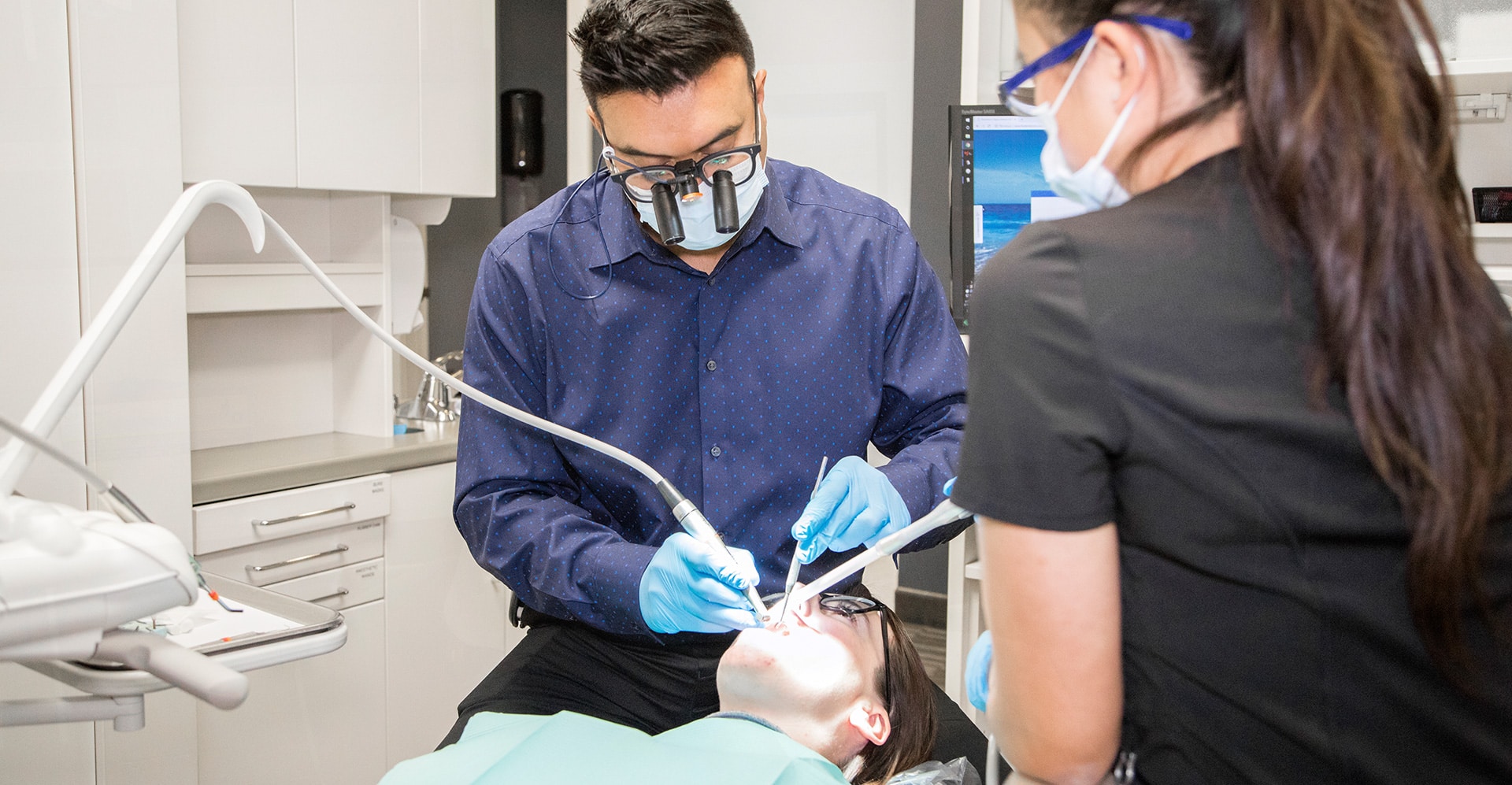In dentistry, a periodontist specializes in the soft tissues of the mouth and the jawbone, which supports the teeth. It is necessary for a periodontist to complete three years of training in a periodontology residency program after graduating from an accredited dental school.
This residency program focuses primarily on surgical and nonsurgical management of periodontal disease and the placement of dental implants.

Periodontists are primarily concerned with preventing gum disease (periodontal disease), diagnosing gum and jawbone conditions, and treating gingivitis, periodontitis and bone loss. The most common cause of tooth loss among adults in developed countries is periodontal disease.
The periodontist is capable of treating mild, moderate and advanced gum disease by addressing the bacterial infection at the root of the problem, providing periodontal treatment, then providing information and education on good oral hygiene and the effective cleaning of the teeth.
Periodontists treat the following conditions most commonly:
Periodontists perform a wide range of treatments to prevent the progression of gum disease, replace missing teeth, and improve the aesthetic appearance of the smile.
Periodontists commonly perform the following treatments:
Periodontists are dental health professionals who are highly skilled in diagnosing and treating soft tissue and bone disorders in the mouth.
In case of questions or concerns, please do not hesitate to contact your periodontist.
Our dentists pride themselves on putting your needs first and offering FREE PARKING — a rarity for downtown dentists. We care and we listen. Our dentists have years of experience and are here to serve your needs at every appointment. If you have a question about your smile or need a second opinion, we’re here to help.

The Dental Room has been serving the community for several years in Downtown Calgary. We provide our patients with high-quality, affordable, and comprehensive dental care. In our general dentistry clinic, we utilize the latest in dental technology and techniques. Our goal is to provide a healthy and beautiful smile for a lifetime.
| Monday | 10:00 a.m. – 06:00 p.m. |
| Tuesday | 09:00 a.m. – 02:00 p.m. |
| Wednesday | 09:00 a.m. – 05:00 p.m. |
| Thursday | 09:00 a.m. – 05:00 p.m. |
| Friday | CLOSED |
| Saturday | CLOSED |
Copyright © The Dental Room All Rights Reserved